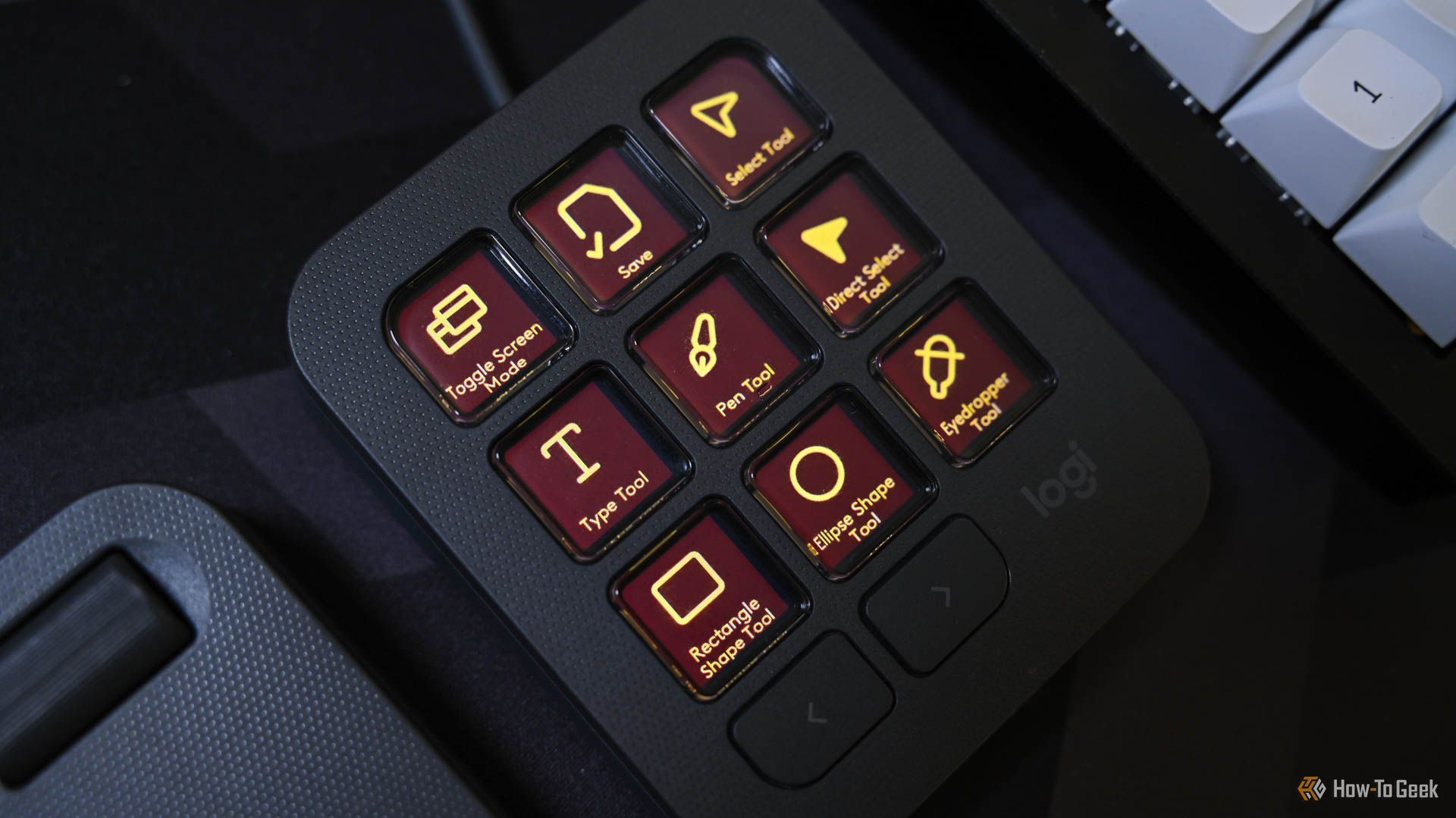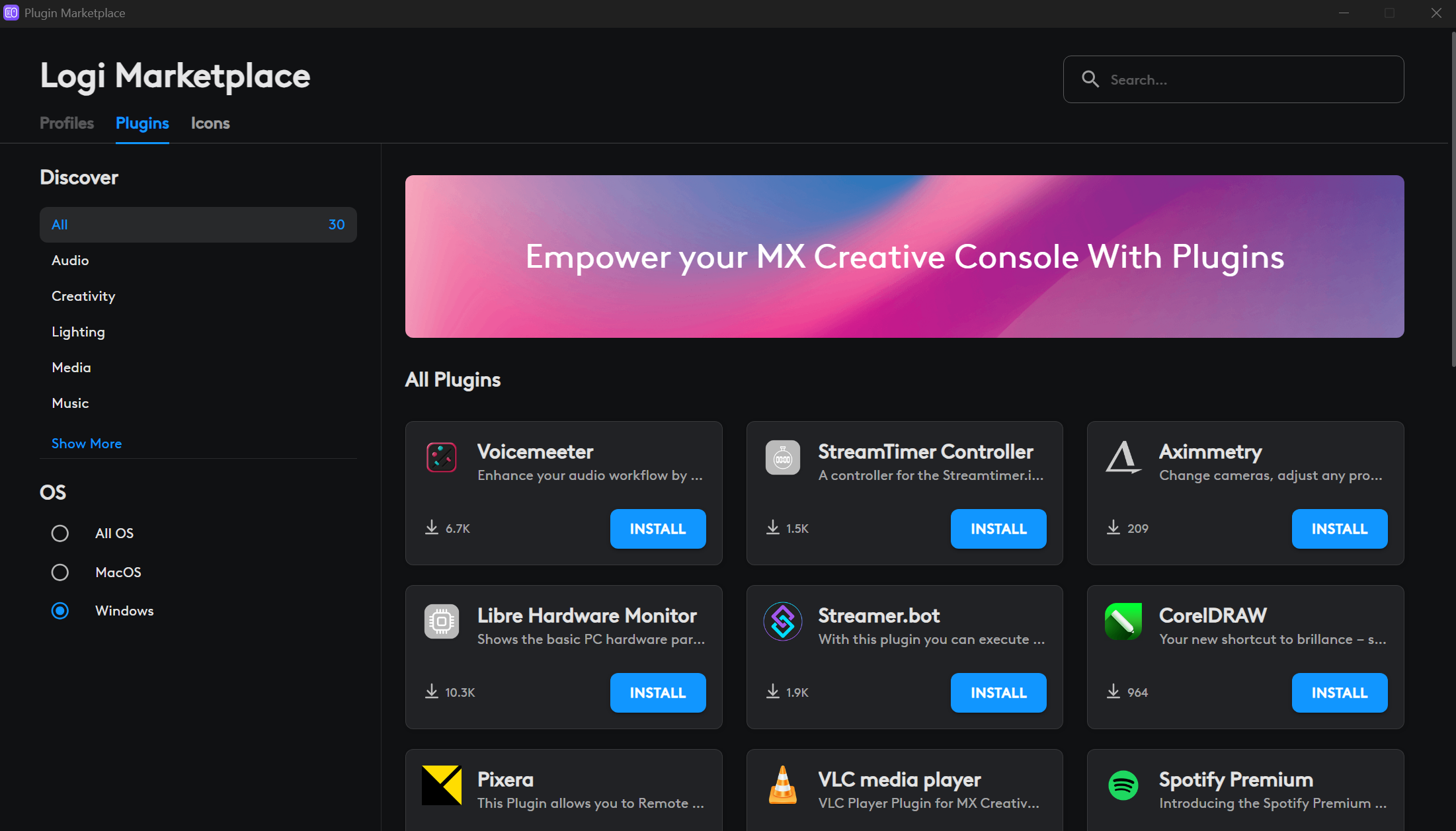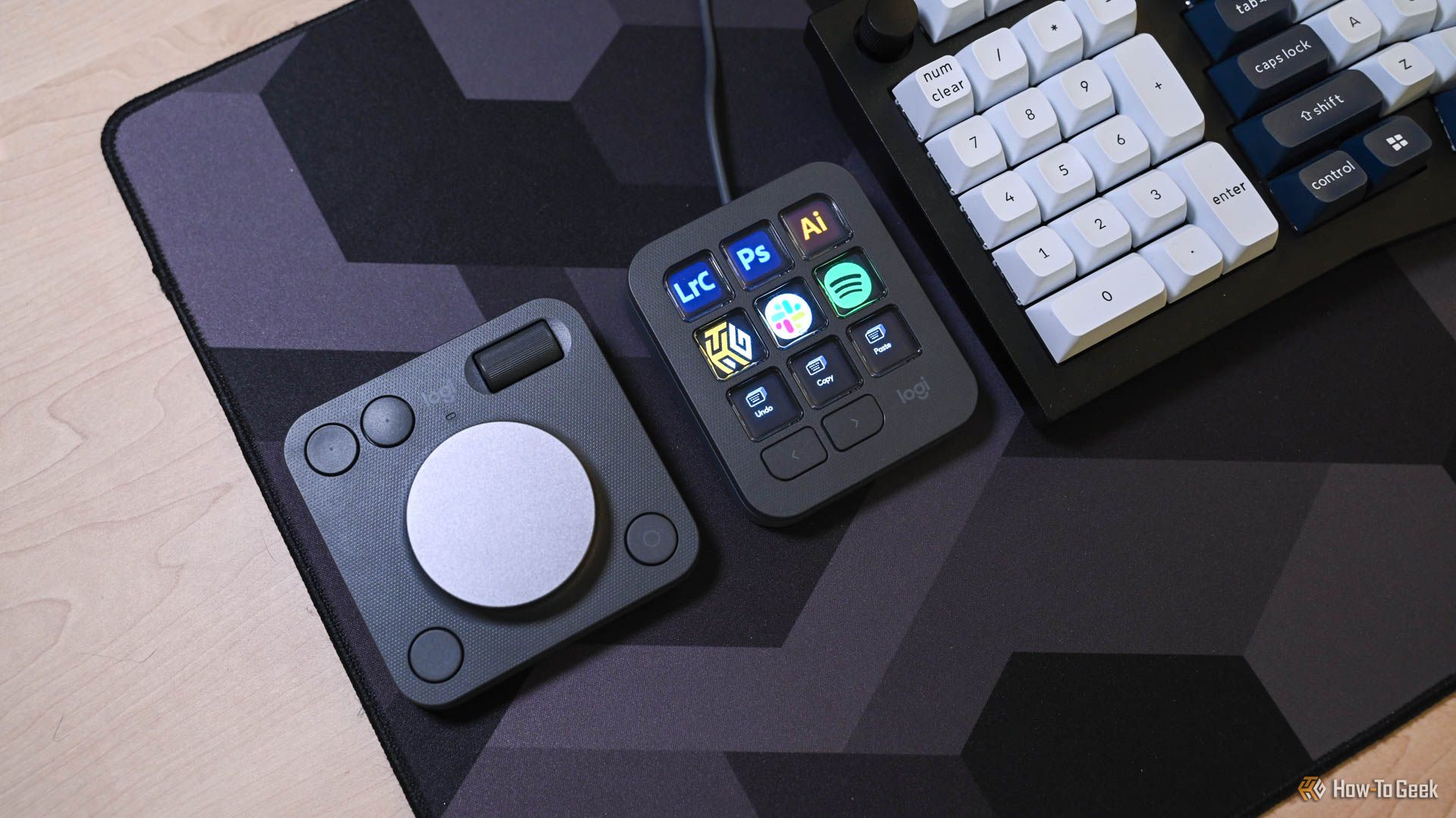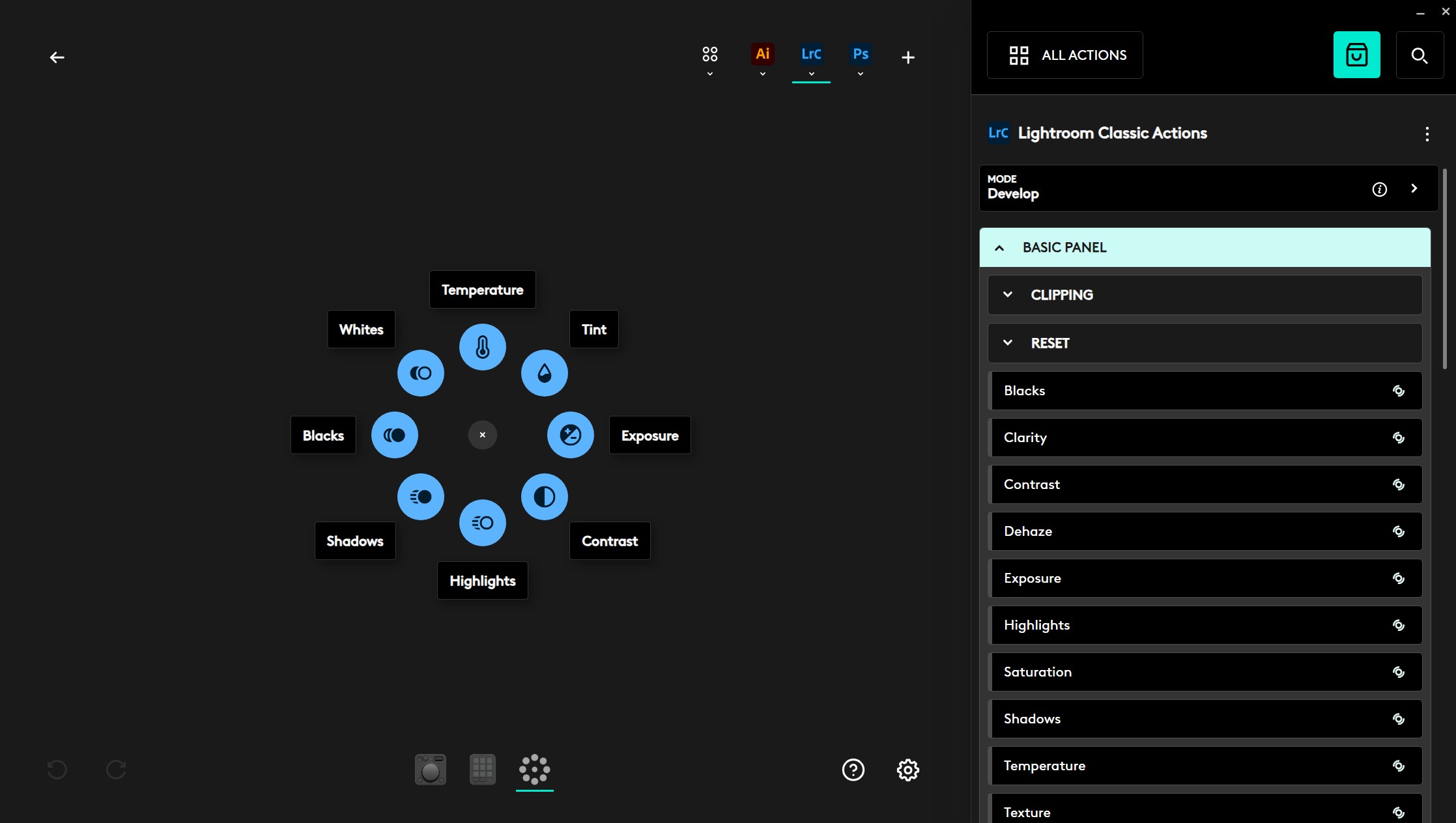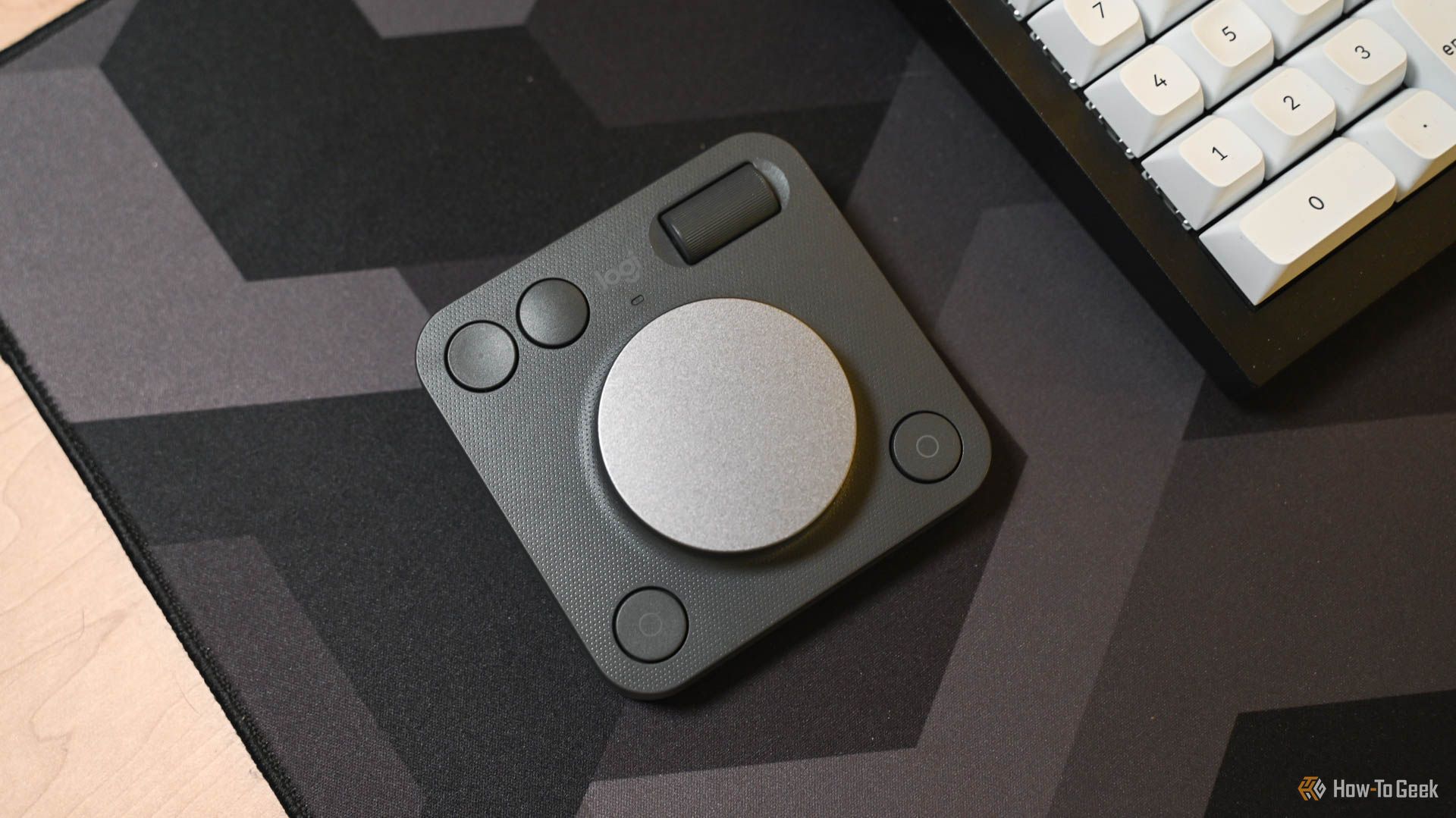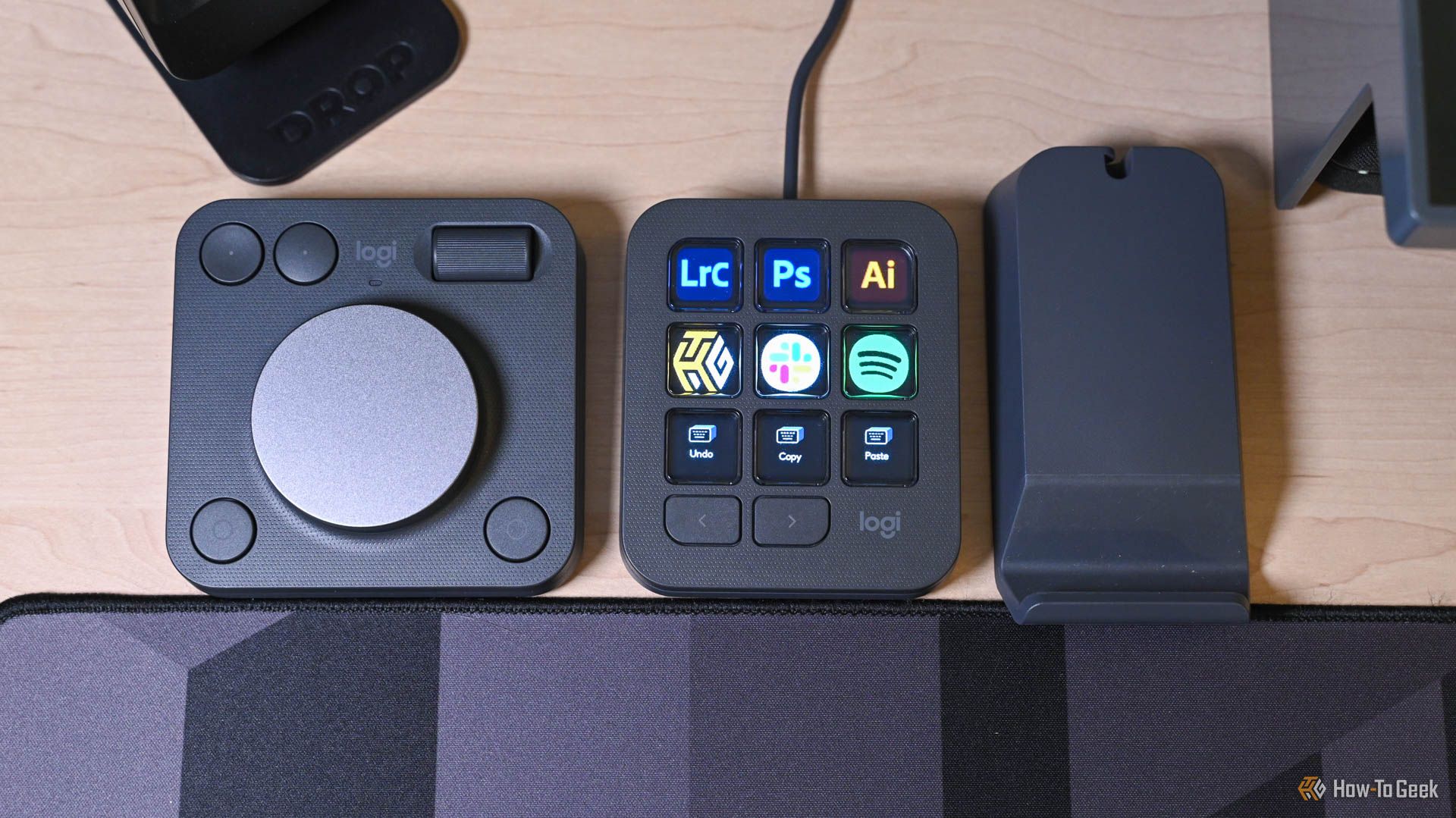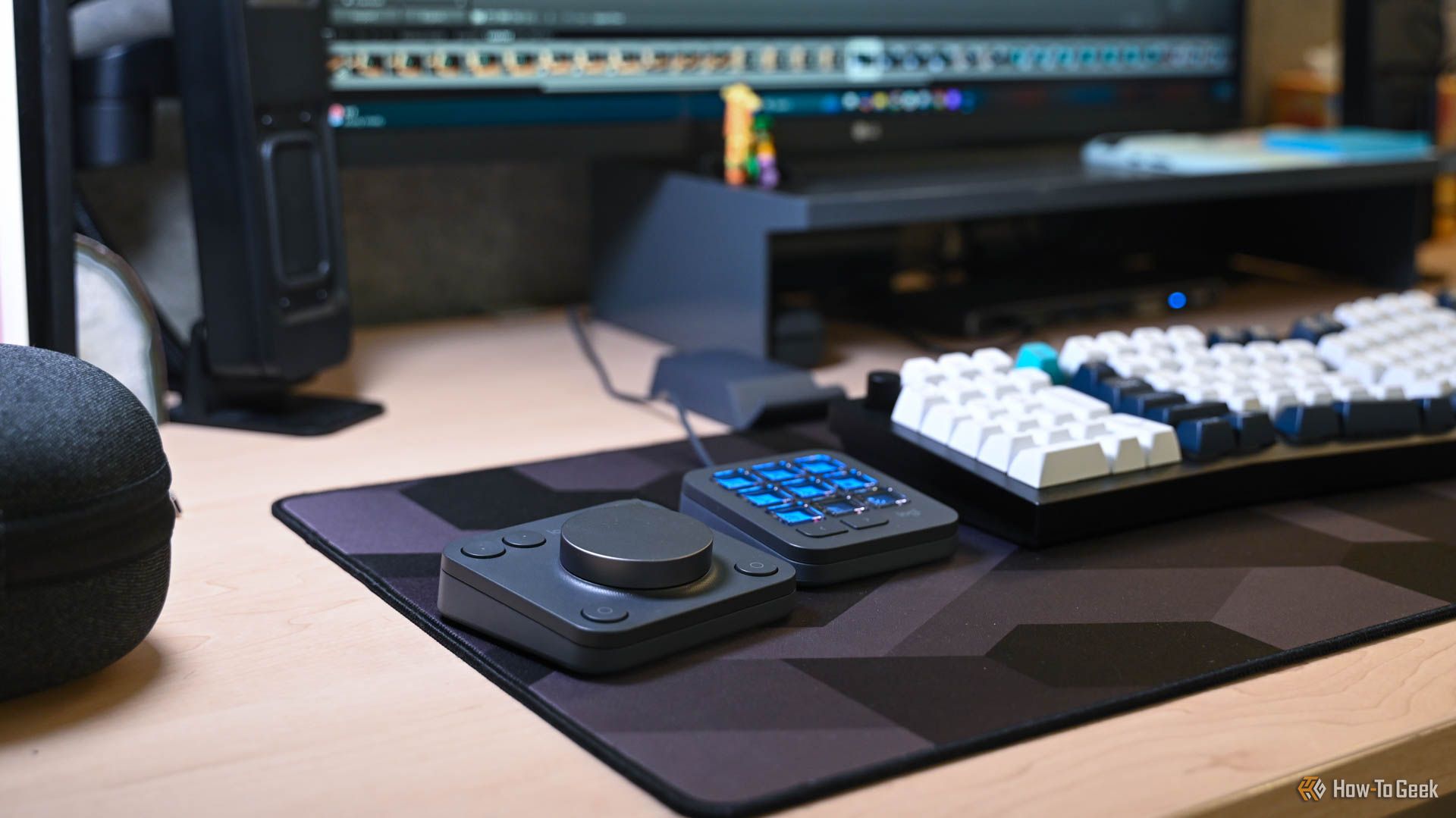My feelings toward the Logitech MX Creative Console are as conflicted as they get. Its two components have varying levels of usability. While the MX Creative Keypad genuinely elevates my Adobe workflows, the MX Creative Dialpad leaves a lot to be desired.
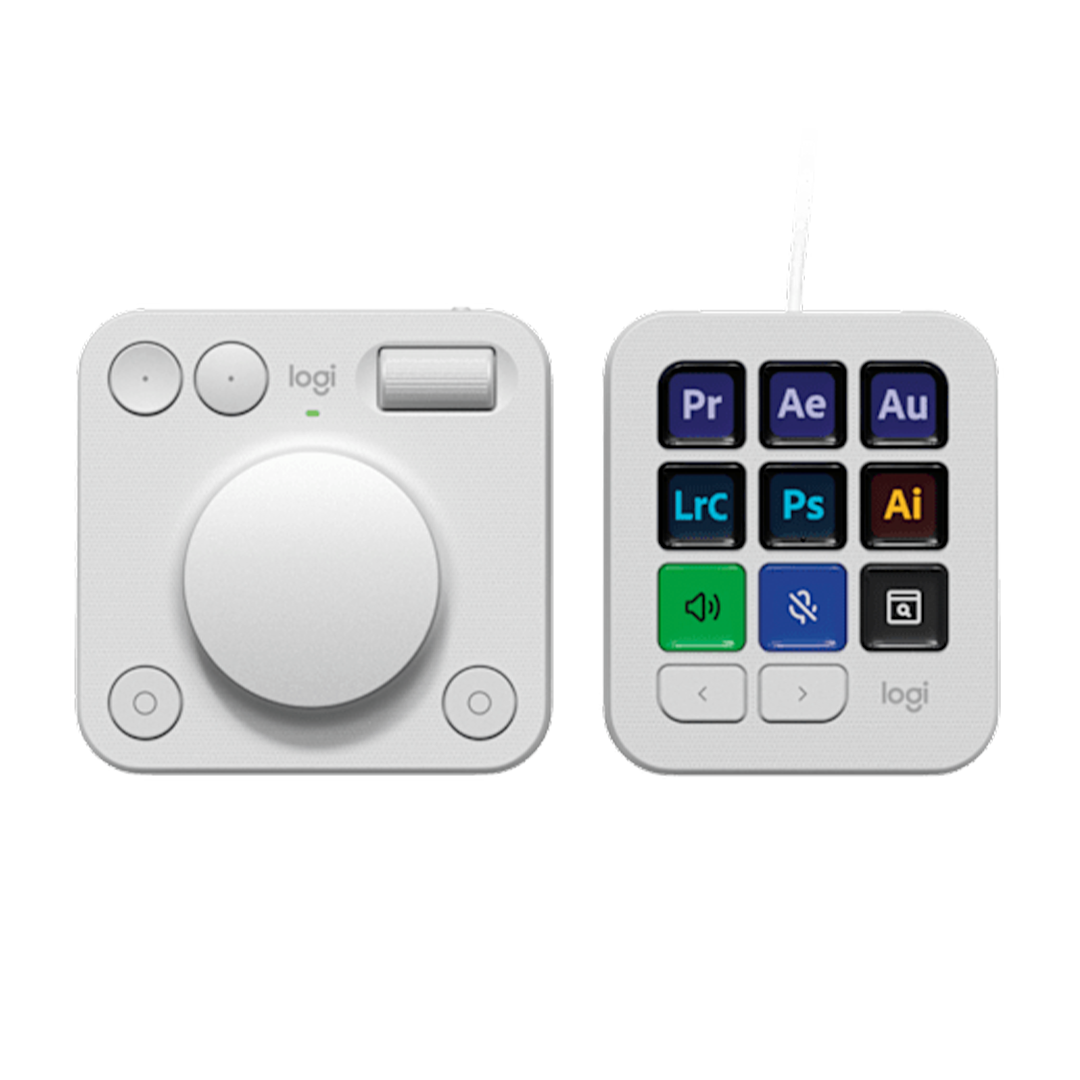
Logitech MX Creative Console
The MX Creative Console consists of two heavily customizable devices aimed to enhance the workflow of Adobe-based creatives. User profiles set up in Logi Options+ update the functionality of both the Keypad and Dialpad depending on the software open reducing the need to memorize endless Adobe shortcuts.
- Seemingly endless customization
- Controls adapt to the program open
- Deep integration with Adobe Creative Cloud
- Three months of Adobe Creative Cloud included with purchase
- Disjointed design between the two devices
- Dialpad controls are unrefined
Price and Availability
Both the Pale Grey and Graphite colorways of the MX Creative Console retail for $200 on Logitech’s website as well as most major tech retail sites. The price includes three months of Adobe Creative Cloud with access to all apps which can be used to set up a new account or can be tacked on to an existing membership.
While I have complaints about the product itself, the inclusion of three months of Creative Cloud heavily impacts the value of this device. The standard $60 monthly fee for an annual subscription to all Adobe apps would cost you $180 after three months, so given the choice of $180 for three months of Creative Cloud or $200 for three months of Creative Cloud and the MX Creative Console, I would opt for the latter even if the device has flaws.
Highly Customizable Adobe Controls, Especially on the Keypad
The product’s strength is revealed when it interacts with Adobe apps. The second I open Photoshop, the buttons transform to my custom profile of specific commands, which are now accessible without having to navigate through extensive toolbars or memorize dozens of shortcuts. Later, when I open Lightroom, different actions are ready to run on both devices.
The default options are nice, but to really benefit from this device’s time-saving features, you’ll want to customize functions through the Logi Options+ Software, available on Mac and Windows. Everyone has their own specific process, and even if you are using most of the preset options, simply rearranging them can result in a large time savings.
You can set up profiles for each Adobe program. While I use this device across Illustrator, Photoshop, and Lightroom, most of my customizations are in my Lightroom profile. That is where I have the most consistent process and can best analyze how the Creative Console affects my workflow.
The integration with Adobe software goes deep. The console considers more than simply which Software is currently running; it accounts for what tab you are actively in. In Lightroom, I have different actions set up for the Library and Develop modes. I also have specific options that only appear when I am cropping photos. The screens and actions are constantly updating. If you can’t find the action you are looking for in the presets, you can create custom commands using Smart Actions.
You can program up to 15 pages of actions per application profile you set up. After navigating through the third or fourth page, you’re not saving much time compared to just using the toolbars, so this seems a bit excessive. The real time savings come when you get so used to using this device that you know which button does what without looking and can use it with the effectiveness of a number pad.
This device has been deeply integrated within Adobe and is currently targeted to work with Adobe software, but the Logi Options+ Marketplace allows you to access available plugins for other apps as well.
My process has sped up dramatically since adopting the MX Creative Console. Having custom controls automatically show up under my fingertips as I need them has reduced a significant portion of time. While a lot of this improvement is thanks to the keypad, the dialpad does play a bit of a role in the process, but not much of one.
The Clearly Lesser Dialpad
The dialpad struggles, especially when sitting next to the highly successful keypad. At first, I loved the idea of precision changes since I’m regularly surrounded by sliders, but honestly, the functionality just doesn’t measure up. If it wasn’t for the custom buttons, I don’t think I would use the dialpad at all.
When used as intended, my interaction with the dialpad is too unpredictable. Sliders work just as anticipated sometimes, but when I think I should be back-controlling photo navigation, I’m suddenly cranking down a photo’s exposure.
In an attempt to get more consistency, I tried to utilize the Actions Ring. This pop-up ring of eight options lets you click a button, or if the option can be controlled by the dial, you hover over it with your cursor and adjust its level using the main dial on the dialpad. Again, sometimes it’s convenient, but other times, I’m creating unintended consequences across my computer.
Once, after answering a quick Slack message in a different window, I went to switch back to editing photos in Lightroom. I pressed the button to open the Actions Ring and hovered over an icon thinking I was about to edit exposure. I ended up changing the brightness of my monitor since I never clicked into Lightroom even though the action ring makes it look like I did.
While this is just one tiny example, I’ve had many of these interactions with the dialpad when switching between apps or tabs. The keypad is constantly updating its functions, too, but the reason it does so successfully is that you can easily see what will happen when you press the button since the button itself is a display. The dialpad’s actions are not as apparent.
By default, the Actions Ring is set up to be launched with the press of the bottom right button on the dialpad. You can customize those buttons, and I’ve decided to program the bottom buttons specifically to move left or right in photo navigation. This does take away the ability to access the Actions Ring while editing photos, but honestly, I’d rather consistently run actions I intend to rather than have access to a larger quantity of less controllable options.
I like having this separate device for the more general actions such as undo, redo, and photo navigation. I keep these as staples on the dialpad, so no matter what tab I’m in on the keypad, I can easily access those actions. I’ve figured out a process that utilizes the dialpad in a way that works for me, but it really isn’t how the device is intended to be used.
At this point, I rarely intentionally touch the dial itself. I wish it had more resistance, though. If you ever-so-slightly brush the dial, you’re making changes.
Also, the dial’s speed is universal. While it can be adjusted, it is frustrating to have different actions dictated by the same dial speed. I can set it so that navigating photos is great, but then that speed frustrates me when I accidentally make drastic changes to a photo’s exposure. This one speed is carried across all your profiles in Logi+, so setting it to work well for you in Lightroom will affect the speed at which you increase your brush size in Photoshop. I’d rather just not use it.
Disjointed Hardware
Having two separate devices is nice since you can set them wherever you want. Sometimes, I want to use them both with my left hand and keep my right on the mouse, while other times, I’m set up with one per hand.
I can’t figure out where the dialpad should live on my desk, though. While the keypad has a stand, the dial pad just bounces around without a natural place for it to live. Also, this is a minor complaint, but the dial pad is noticeably top-heavy. Since I frequently pick it up and move it around, that stands out.
A few other design considerations strike me as a bit odd. The two devices have separate connection methods and power sources. The MX Creative Dialpad connects directly via Bluetooth and is powered by two AAA batteries, while the MX Creative Keypad requires you to maintain a wired connection for both purposes.
According to Logitech, the wired connection is required to prevent the device from dying during long periods of use because of the energy consumption needed for the LCD screens. Since the dialpad requires so little power, they opted to avoid using a rechargeable battery for sustainability purposes. With the batteries lasting up to 18 months, I understand Logitech’s thought process, but it still feels a bit disjointed to have this variation within two parts of the same product.
Rather than having any additional finishes on the bodies, a slight texture was added during the molding process. While this is a more sustainable approach, something feels lackluster about the plastic body when compared to the quality of the aluminum dial on the dialpad or the LCD screens of the keypad.
It’s challenging to critique the hardware since numerous decisions were centered around sustainability, but this does not negate the fact that it leaves the product feeling fragmented.
Should You Buy the Logitech MX Creative Console?
I know I oversimplified the matter earlier by implying that the Logitech MX Creative Console essentially costs $20. Yes, there are other factors, such as potential discounts when you first sign up to Adobe, upfront annual payment options, or if you already have a subscription through work or school. If you are planning to pay for Adobe out of pocket, though, this is a great option since you will definitely benefit from at least the keypad.
I have a much harder time recommending this $200 product without factoring in the subscription. If you only use a job-supplied Adobe subscription but personally want to improve your desk setup, it is a lot harder to justify spending so much on this imperfect hardware when you don’t benefit from a subscription.
If you are making your decision solely because you are desperate to speed up processes in Adobe, then yes, you will want this. The customizations take very little effort to set up and will accelerate those repetitive tasks that consume so much of your time. The keypad’s functionality and adaptability outweigh many of my design critiques.
After months of use, this product still leaves me feeling conflicted. When asked if I enjoy using it, there is no simple answer since it’s not that cut and dry. I love the keypad, but there is no denying that the MX Creative Console as a whole is mismatched and unrefined, even if it’s successful at speeding up Adobe workflows.

Logitech MX Creative Console
The MX Creative Console consists of two heavily customizable devices aimed to enhance the workflow of Adobe-based creatives. User profiles set up in Logi Options+ update the functionality of both the Keypad and Dialpad depending on the software open reducing the need to memorize endless Adobe shortcuts.


